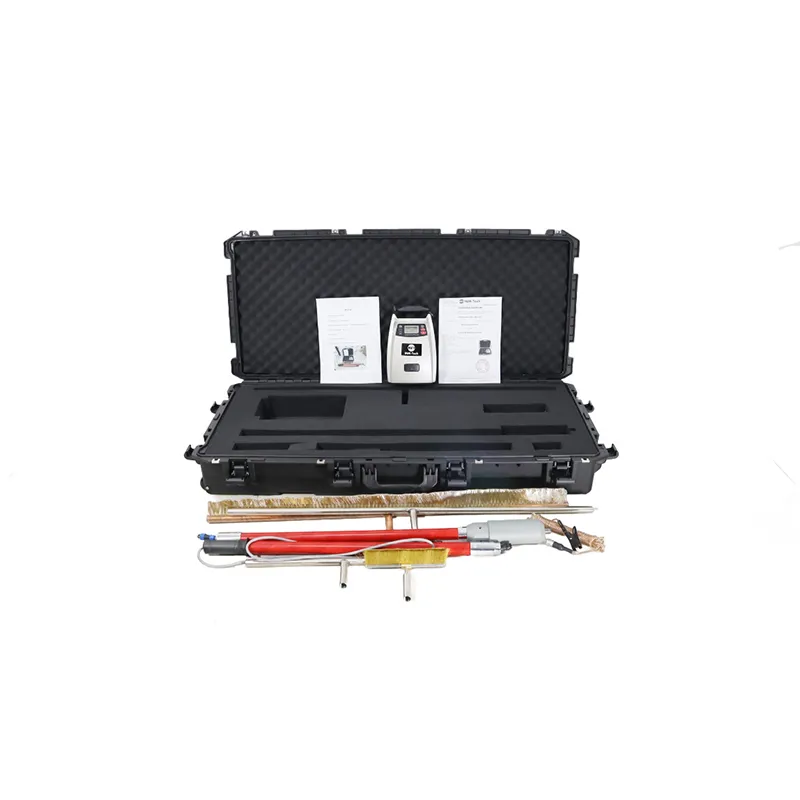Field Notes: Pulse-Voltage Leak Detector for Geomembranes
I’ve walked enough landfill cells to know: you don’t want a liner problem sneaking past commissioning. That’s why the MMT-7DJ caught my eye. It uses a pulsed high-voltage method to hunt down pinholes and cuts across big areas, then chirps when it finds trouble. Simple idea, strong execution—actually kind of refreshing.

Why this matters now
Two industry trends converge: regulators increasingly ask for liner integrity surveys before cover or impoundment fill; and owners want faster commissioning with defensible QA/QC. Pulse-voltage Leak Detector tools have matured—lighter rigs, better filtering, smarter alarms. In fact, crews tell me the newer sets cut rework time notably, especially on windy days when older audio cues were finicky.
How it works (short version)
The MMT-7DJ applies a controlled pulsed potential over the exposed geomembrane. A grounded return path completes the circuit. Any breach creates a localized current path—your classic “hot spot”—and the handset beeps. It’s designed for large HDPE/LLDPE areas in landfills, tailings ponds, wastewater lagoons, aquaculture ponds, and secondary containment. To be honest, the learning curve is modest if your crew already does liner integrity surveys.
Process flow on site
- Materials: pulse generator, sweep electrode/wand, ground lead, test probes, spare batteries.
- Method: light surface dampening if needed (per method), set voltage, sweep grid lanes ≈ 2–3 m spacing, mark alarms with paint flags.
- Testing standards: typically aligned with ASTM D6747 selection guidance and D7002/D7007 electrical leak location practices (site specifics apply).
- Verification: probe each hit, document GPS and photo, patch per CQA, re-test.
- Service life: around 5–7 years for the instrument with routine care; electrodes are consumables.
- Industries: solid waste, mining, industrial wastewater, oil & gas secondary containment, and liners in irrigation reservoirs.
Product snapshot: MMT-7DJ
| Spec | Details (≈ real-world) |
|---|---|
| Model | MMT-7DJ Leak Detector |
| Detection method | Pulsed high-voltage (spark/arc localization) |
| Voltage range | 0–10 kV adjustable, with current limiting |
| Smallest leak detected | ≈0.5–1.0 mm pinhole (site moisture dependent) |
| Coverage rate | up to 8,000–12,000 m²/day with two operators |
| Alarm/UX | Audible beep + indicator lamp; simple dial controls |
| Power | Rechargeable Li-ion; ≈8–10 h per charge |
| Operating temp | -10 to 50°C (real-world use may vary) |
| Compliance | CE, RoHS; manufactured under ISO 9001 facility |
Origin: NO.355, Youyi Street, Qiaoxi District, Shijiazhuang, Hebei, China. Many customers say the unit is “rugged enough” for daily grid sweeps; one superintendent joked the beep is loud enough to hear over a generator—useful, surprisingly.
Vendor snapshot (what crews compare)
| Model | Method | Smallest leak | Speed | Notes |
|---|---|---|---|---|
| MMT-7DJ Leak Detector | Pulse voltage (exposed GM) | ≈0.5–1.0 mm | High | Strong alarm; straightforward controls |
| Brand X LIS-200 | Water lance ELL | ≈0.5 mm | Medium | Requires water handling |
| Vendor Y ELL-Pro | Conductive geotextile | ≈1.0 mm | Medium–High | Excellent on covered liners |
Real-world data, customization, and QA
- Bench tests: detected 0.5 mm pinhole on 2.0 mm HDPE at ≈7 kV in a controlled cell; field hit rate >95% when grid spacing maintained.
- Customization: extended wand, longer ground leads, GPS tagger, carry harness, OEM branding, battery packs.
- Certifications: CE/EMC and RoHS noted; factory quality system ISO 9001.
- Suggested standards: use per ASTM D6747 selection guide; methods akin to D7002/D7007 depending on moisture/cover conditions.
Mini case study
A contractor on a 40,000 m² landfill cell ran the MMT-7DJ pre-cover. They flagged seven pinholes (weld splatter, utility punctures). Repairs took half a day; avoiding a post-fill discovery reportedly saved ≈$120k in rework and delays. I guess that’s the whole point—find it while you can still fix it with a heat gun and patch kit.
Where it shines (and things to watch)
- Advantages: fast coverage, audible confirmation, portable kit, good on large exposed geomembranes.
- Watch-outs: needs proper grounding; very dry liners may need light dampening; follow site safety for high-voltage tools.
Authoritative references
- ASTM International – D6747, Standard Guide for Selection of Techniques for Electrical Leak Location on Geomembranes: https://www.astm.org/Standards/D6747.htm
- ASTM International – D7002, Electrical Leak Location on Geomembranes (covered conditions): https://www.astm.org/Standards/D7002.htm
- ASTM International – D7007, Electrical Leak Location on Exposed Geomembranes (water lance methods): https://www.astm.org/Standards/D7007.htm
MM-Tech, established in 2011, is a leading manufacturer of thermoplastic welding equipment in China.hot air plastic welder We specialize in the research, development, production, and sales of thermoplastic welding equipment.hot air welding gun Our product line is extremely rich, covering geomembrane welders, polymer hot air welders, tarpaulin hot air welders, hot air welders, hand extrusion welders, and various welding tools, comprehensively meeting the diverse needs of both on-site construction and workshop operations.hot air welder roofing Our products have been exported to over 100 countries and have won the trust of more than 3,000 customers.plastic welding heat gun|super blog